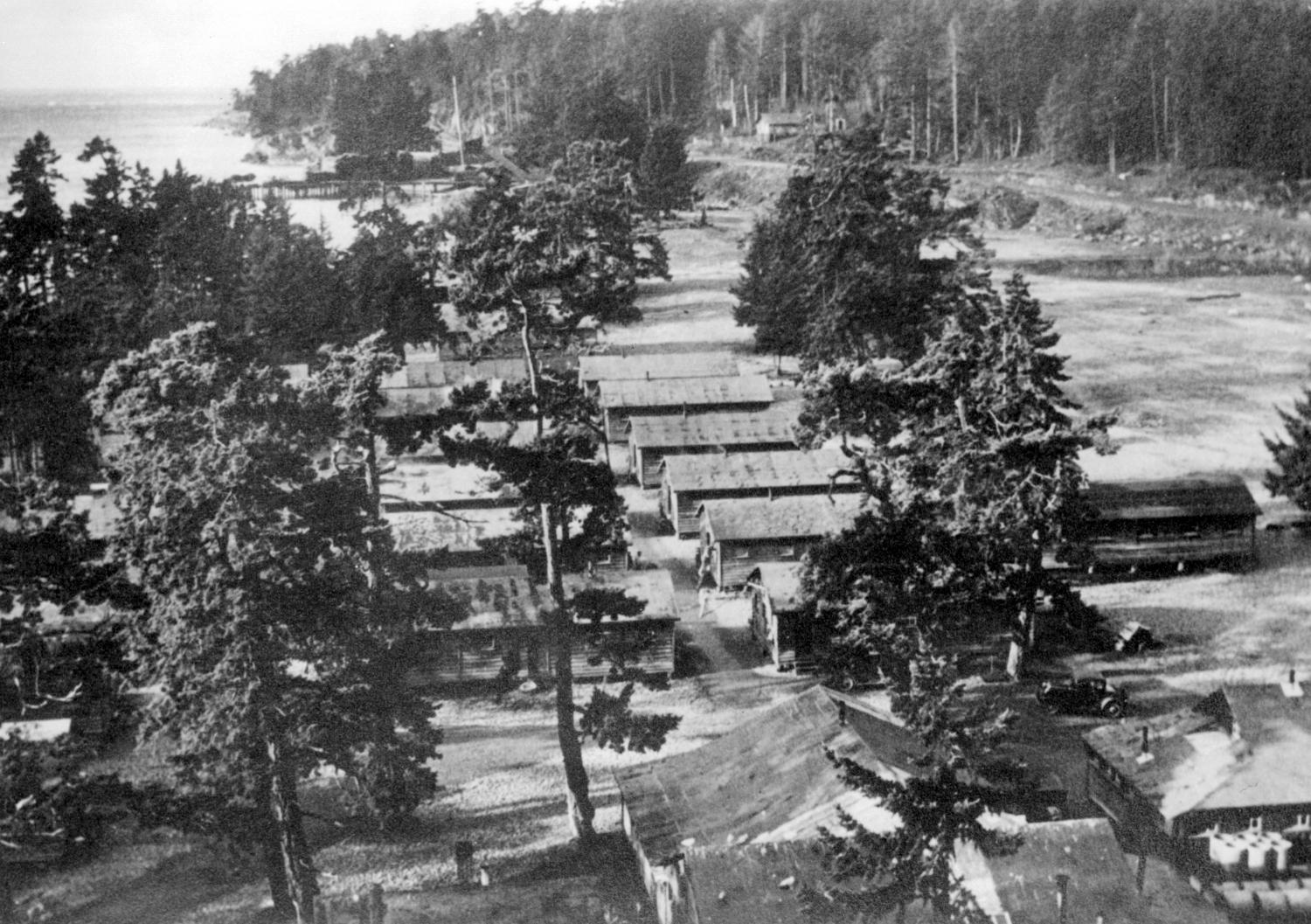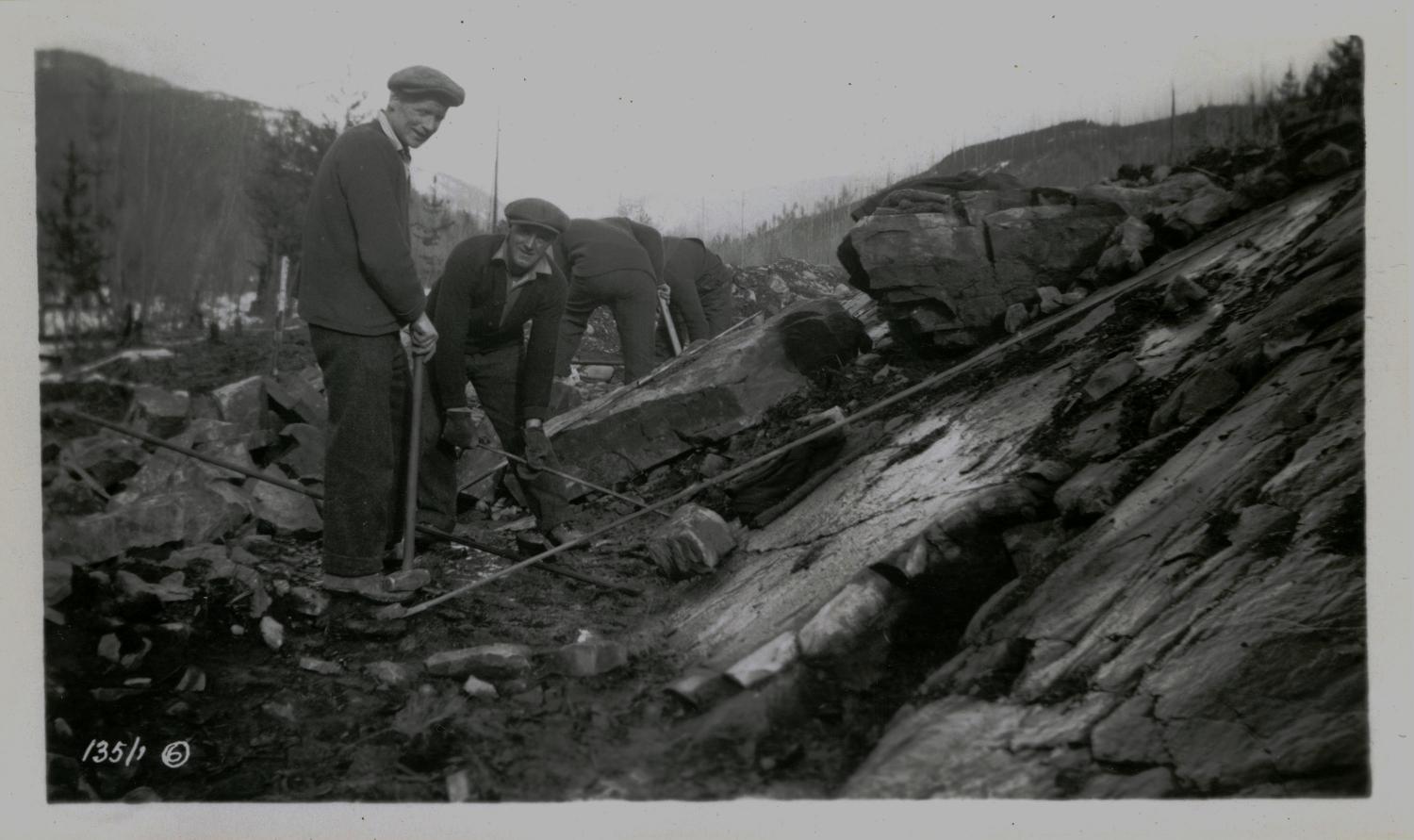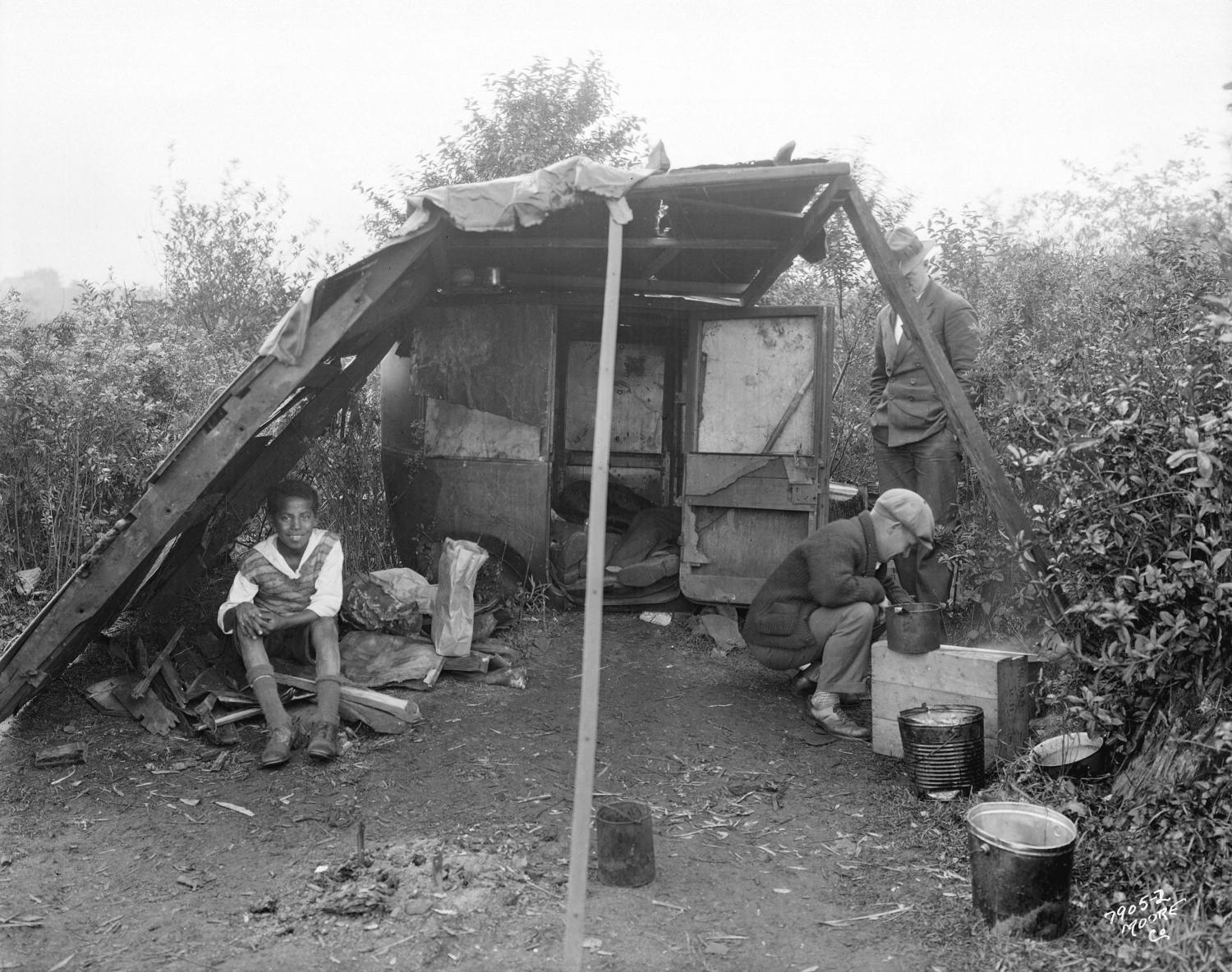Unemployment Relief Camps
Thousands of unemployed men are sent to rural B.C. during the Great Depression
Date: 1932
Before the stock market crashed in 1929, British Columbia was a destination for transient workers. Men from across Canada would head west to take part in the Pacific Northwest's resource economy, moving from job to job. The seasonal work might not have provided a steady paycheque nor a financial safety net, but it was always there as an option.
At least, until it wasn't. After the markets took a dive, work out west dried up.
That didn't stop many from making the trip to B.C. Lured by the province's temperate climate, unemployed Canadian men continued to arrive en masse. Homeless "jungles" formed on the outskirts of towns. At one point, the frustrated mayor of Kamloops petitioned the provincial legislature for help. "The town is being overrun by beggars and panhandlers," he wrote. "Where is it all going to end?"
It was Vancouver, though, that earned the reputation as the "Hobo Capital of Canada." The western terminus of the railway had become the final landing point for thousands of unemployed men. The city's leaders were worried. Having a sizeable homeless population is costly. Burnaby and North Vancouver both declared bankruptcy in attempts to address the issue. "The situation in Vancouver is beyond our control," the city council informed Prime Minister R.B. Bennett in late 1930.
By 1931, four different "hobo" jungles had sprung up throughout Vancouver, primarily along the waterfront and on the east side. Squatters had also congregated in Stanley Park and on the bygone Kitsilano Reserve, near where the Burrard Street Bridge now stands. The total number of transient men in Vancouver alone was around 12,000. It was a racially and ethnically-diverse mix, a "miniature League of Nations." And the concentrated poverty became a rallying point for government dissatisfaction — particularly for communist and evangelical activists who saw the jungles as an opportunity to spread their respective messages.
By September 1931, city officials had seen enough. Vancouver began to clear the jungles, citing a typhoid outbreak. Thousands of men were pushed onto the city streets, without even the makeshift shelter the jungles afforded them. Wary about a potential communist uprising, the federal government had an idea: it would set up rural "relief camps," hundreds scattered across the country, including many in B.C. While the government deemed the camps "voluntary," transients risked arrest if they didn't go.
The "unemployed workers" at the camps provided the government with cheap labour. They built roads, airports and other essential infrastructure for as little as 20 cents per day — just slightly more than three dollars today. Although the government gave workers room and board, conditions were rough. As one worker put it: "Bed bugs too fresh and eggs not fresh enough." It was a situation that hardly inspired a hardy work ethic.
"You can't make a fellow work hard for 20 cents a day," said Alan Collier, a relief camp worker and celebrated future landscape artist. "These camps and the work being done in them are just a huge waste of money. They aren't going to have a decent road when they do finish." He added, "I believe the only reason they do any work here at all is to keep the fellows out of the cities."
His speculation wasn't unfounded. By physically extricating the urban homeless population, it would be easier for the general populace to ignore the extreme economic hardship that had befallen thousands of Canadians. The men in these camps could neither vote nor organize politically, further quashing any strong voice of dissent or potential revolution.
But word of the camps' sordid conditions did get out, and sympathetic social activists picked up the men's cause. While the intention of the camps may have been to contain the problem of unemployment, it actually had the opposite effect. The camps further ignited tension between a frustrated public and a hapless government. By 1936, a newly-elected federal government would shut the camps down altogether.
Sources:
1. “Alan Caswell Collier, Relief Stiff: An Artist's Letters from Depression-Era British Columbia.” Edited by Peter Neary, UBC Press, 1 Mar. 2018, www.ubcpress.ca/alan-caswell-collier-relief-stiff.
2. Belshaw, John Douglas. “The Great Depression.” Canadian History: Post-Confederation, BC Open Textbook Project, 17 May 2016, opentextbc.ca/postconfederation/chapter/8-5-the-great-depression/.
3. McCallum, Todd. Hobohemia and the Crucifixion Machine: Rival Images of a New World in 1930s Vancouver. AU Press, 2014.
4. McMartin, Will. The Great Depression in BC. The Tyee, 26 Nov. 2008, thetyee.ca/Views/2008/11/26/BCDepression/.
5. Mickleburgh, Rod. On the Line: a History of the British Columbia Labour Movement. Harbour Publishing, 2018.
6. “On to Ottawa Trek.” On to Ottawa Historical Society, B.C. Labour Heritage Centre, 2002, www.labourheritagecentre.ca/wp-content/uploads/2018/08/Booklet-On-to-Ottawa-web.pdf.






